Lucky you if you have a talent for growing plants and making them healthy. If this doesn’t sound like you, did you know that anyone can become an accomplished gardener? Anybody with a passion for it can begin a garden, and you'll soon see that it isn't as hard as it looks. You’ll also discover a few surprising things that can be effectively utilized in the garden.
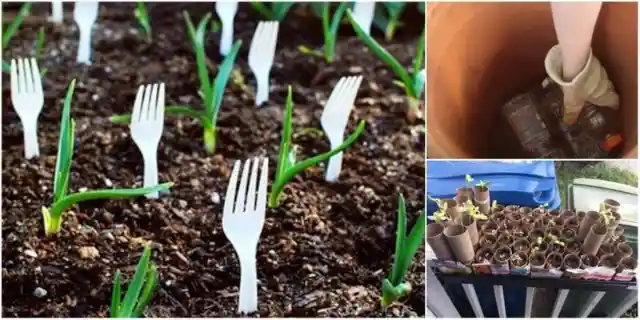
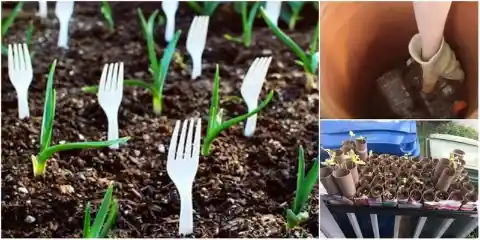
If you have some everyday things like old paper or salt lying around, they can prove to be useful as well. Don’t worry if some of these hacks look tricky – we've included everything you need to know to achieve expert outcomes. From cultivating seedlings to forestalling weed growth, these tips are convenient and simple to follow.
Grow Onions Indoors
Did you know that gardening can start inside your home? Even in places with little to no space, you can channel your inner farmer by growing your own produce. When you're cooking, remember to keep the green onion scraps. The white part found at the bottom of green onions usually has roots joined to it.
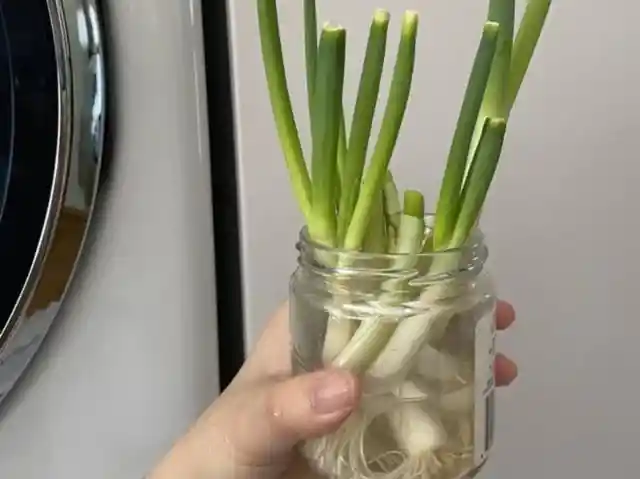
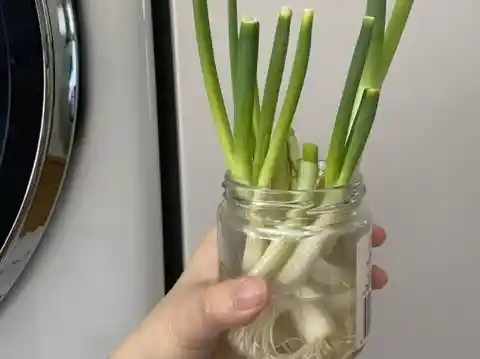
Keep this part after cutting up the green tops. Put it in a container with enough water to cover the roots but not so much that it drenches the vegetable. You will see new growth after a few days.
Epsom Salt as a Natural Fertilizer
If you haven't utilized Epsom salt in the garden before, now is the time to do it. If you have house plants that you apply store-bought fertilizers to consistently, you'll begin seeing crystals resting on top of the soil. This is because the majority of store-bought fertilizers contain Epsom salt.
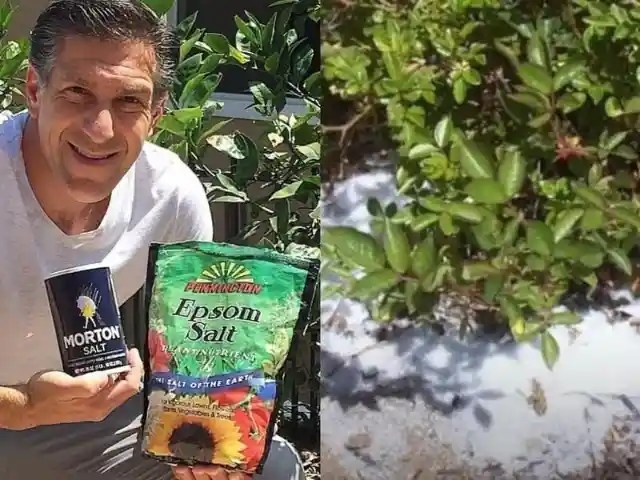
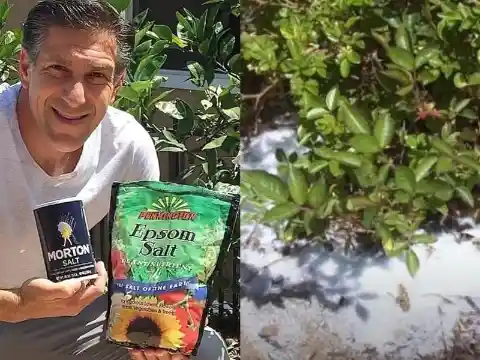
You can skip all the chemicals in fertilizer and simply add some Epsom salt. Either sprinkle some on your flower bed or add a tablespoon of this salt to warm water, let it dissolve, and then spray it on the soil around your plants.
Grow Herbs with a Shoe Organizer
If you need to save space outside or you're attempting to make the most out of a tiny garden, this hack is for you. To make a vertical garden, all you need is a shoe organizer, soil, seeds, and a little TLC.
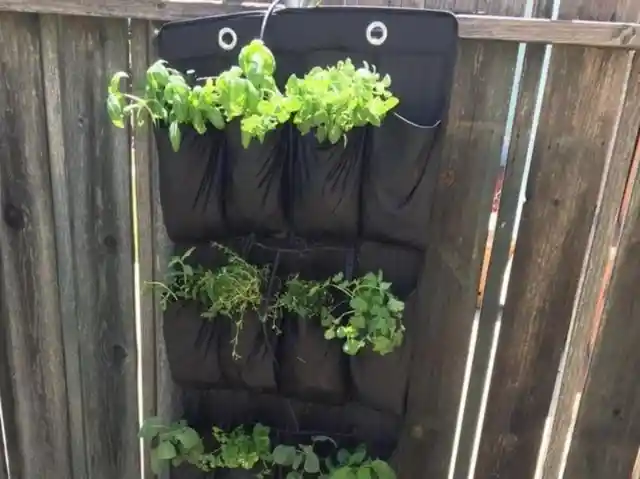
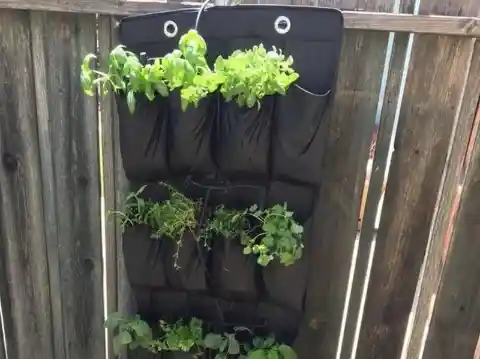
A shoe organizer offers plenty of space for you to grow a variety of herbs. Make sure you punch a few holes underneath each pocket so water is able to drain. This will ensure the roots don’t get waterlogged, which can kill the plants. Fill the pockets with soil, then put the seeds or seedlings inside.
Old Wine Corks as Markers
Home gardening fanatics will cherish this trick. If you have a herb garden filled with many plants, it can be easy to forget which is which and what each plant needs in terms of sunlight and water. To make life easier, create plant markers from old corks.
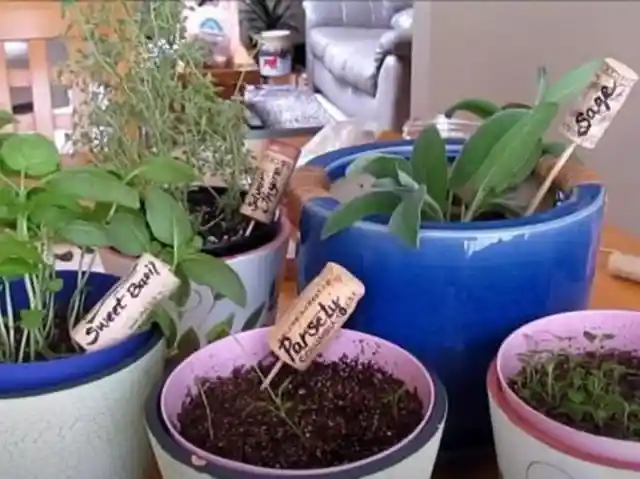
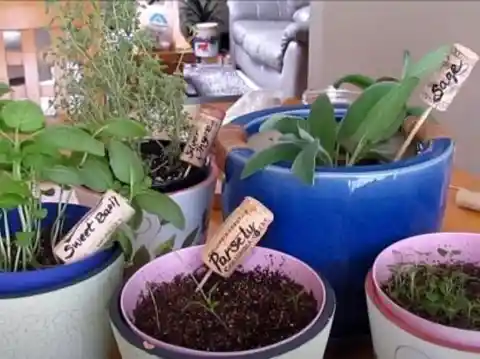
This method is as easy as gardening gets. Simply assemble a few old wine corks, toothpicks, and chopsticks. Write the plant’s name on each cork, and affix it to a toothpick. You now have useful markers that look adorable as well.
Plastic Bottles for Your Greenhouse
A lovely greenhouse is every gardener’s fantasy, but if this is something you don't have space for, a few plastic bottles will do the trick. The best part about this hack is its simplicity. First off, cut each plastic container's base off and add some soil to it. Then, place the seeds or plant cuttings in them.
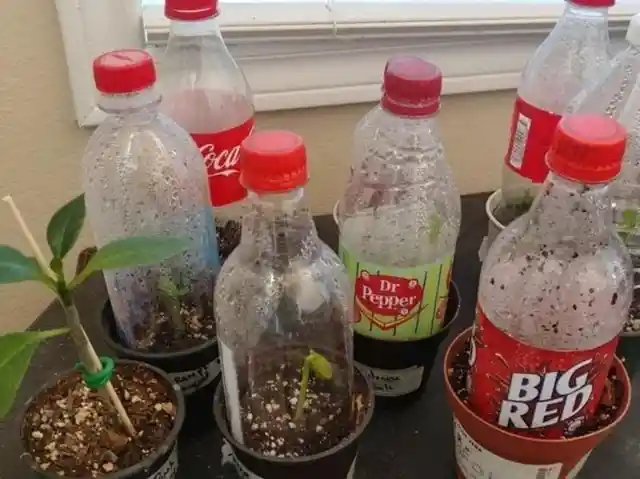
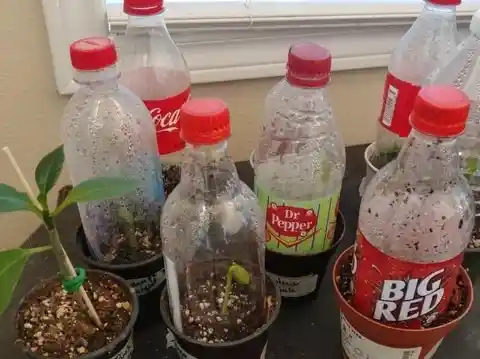
You will now be able to water your plant and cover it with the container's top. Put the water bottles underneath your window as this is the ideal place for them to work their magic. The second you notice the plants are sufficiently stable, you can replant them in your garden.
Combat Weeds with Newspaper
Important though the news may be, it becomes history the following day. At that point, you will be left with an outdated paper that no longer offers any value. These can start to stack up, and if you’ve ever seen an episode of Hoarders, you know how bad things can get. Thankfully, you can give old newspapers new life in your garden as weed zappers.
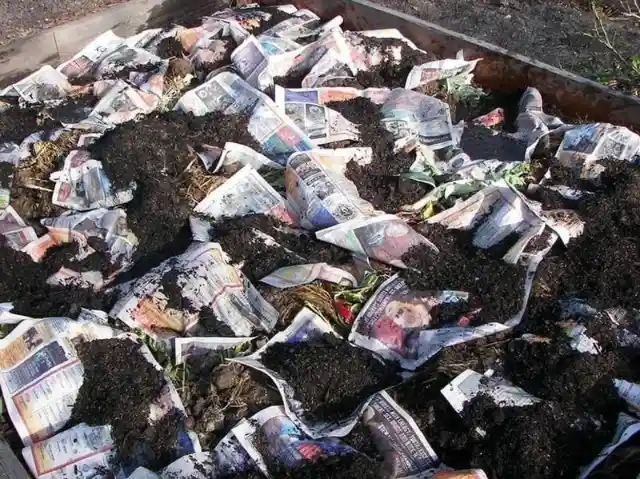
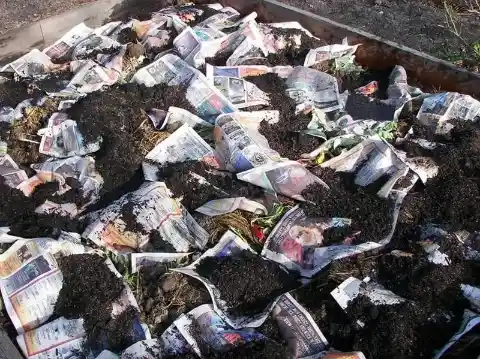
This trick brings about the ideal result, and it's one brilliant garden tip you ought to remember. Just add sufficient soil on top of the spread-out newspaper sheets. The paper can still permit dampness during watering, but it will hinder weeds from spreading in your garden.
A Bar of Soap to Keep Pests Away
Creatures like rabbits, squirrels, and deer may visit your garden and wreak havoc amongst your plants. To ensure you never wake up to a scene of destruction, you need to ward these animals off before they have a chance to destroy all your hard work. As it turns out, soap can be your greatest ally in this endeavor.
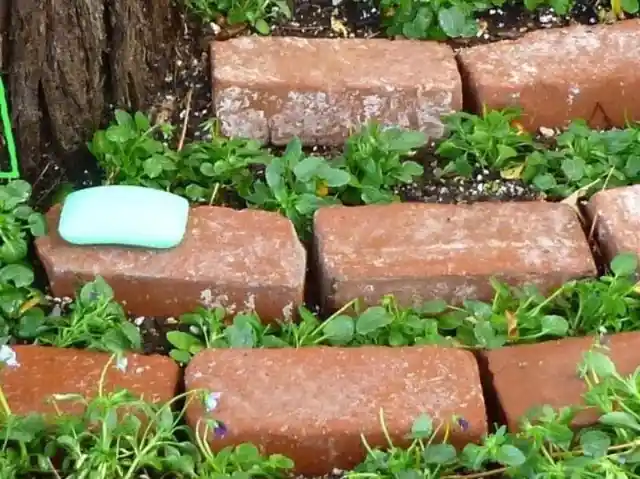
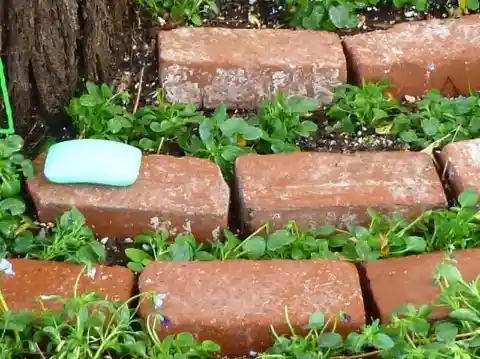
Gardening specialists recommend that you shred a bar of soap then sprinkle it around your garden. No damage will be done to your plants, but the pests will be kept at bay. Make sure to consistently repeat this hack, especially after rain.
Recycling Vegetable Scraps
You don't need to pick seeds from the nearby store any longer. Plants can be grown from the seeds of the fruits and vegetables you enjoy. Over time, this can save you a lot of money, and it’s also a whole lot of fun. Take bell peppers, for instance – you can cut one in two and scrape out the seeds.
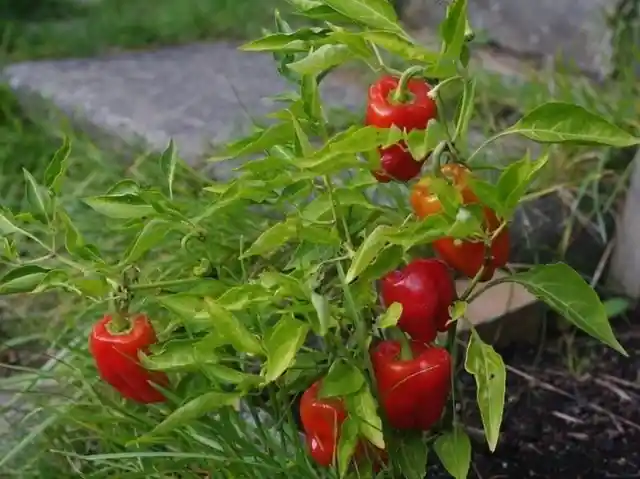
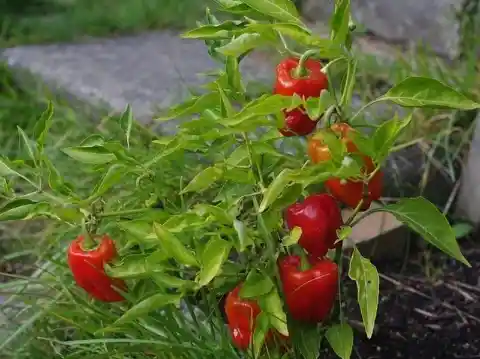
Once you’ve done this, fill one of the empty halves with the loose seeds and cover it with soil. Water it regularly, and before you know it, the plant will grow and you'll have new homegrown peppers. You can use this trick with tomatoes and pretty much anything else that has seeds.
Sand to Halt Rust in Your Garden Tools
Over the long haul, because of thorough use, wear and tear might set in and degrade your garden tools. Climate likewise has a significant influence on the devaluation of these devices. However, you can save these tools before they get destroyed. To do this, create a storage space for them using mineral oil and a bucket full of sand.
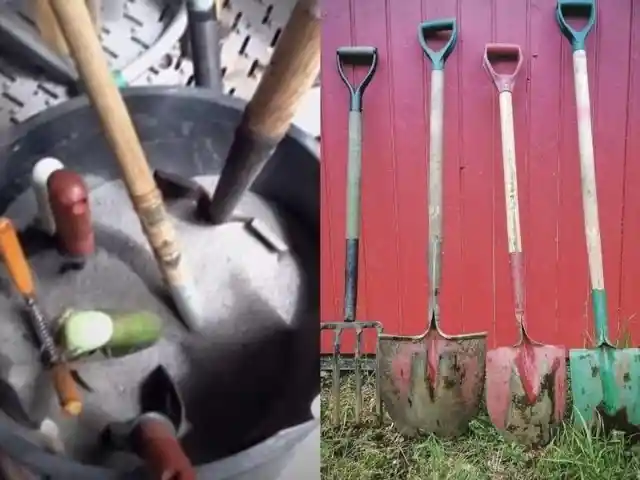
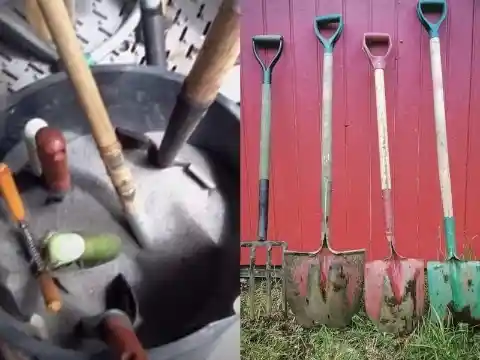
This will be their permanent home, so make sure you don’t use a bucket you need for other tasks around the house. If you don't have mineral oil, baby oil can fill in as a decent substitute. After you've blended the sand and oil, place all your tools in it. Not only will they be conveniently located in one space, but they will also be protected between uses.
Empty Gallons Jugs as Watering Cans
If you have children, they'll generally want to assist you when you're in the garden. Watering the plants is an easy task to teach them, and most kids love the idea that they’re nurturing another living thing. If you don’t have a watering can that’s easy for little hands to manage, an empty gallon can be a decent substitute.
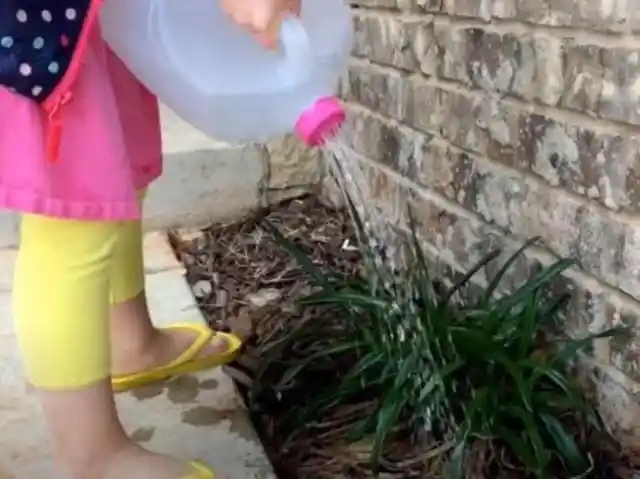
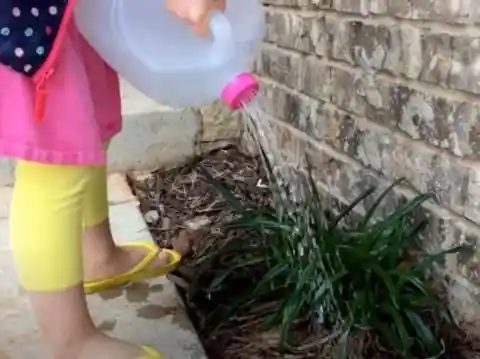
Unscrew the top from the container, and using a sharp tool, carefully punch a few holes in the plastic lid. Fill the gallon jug with water, screw on the punctured top, and you have a child-friendly watering can. For smaller children, you can use this same trick on smaller jugs.
Stop Plants From Overtaking Other Plants with Plastic Pots
Some individuals neglect to consider that plants will develop – fanning out as they do so. After some time, their roots might even strangle the plants around them, and you need to ensure they don't do that. To address a circumstance like this, find a new pot that’s bigger than the plant's primary pot.
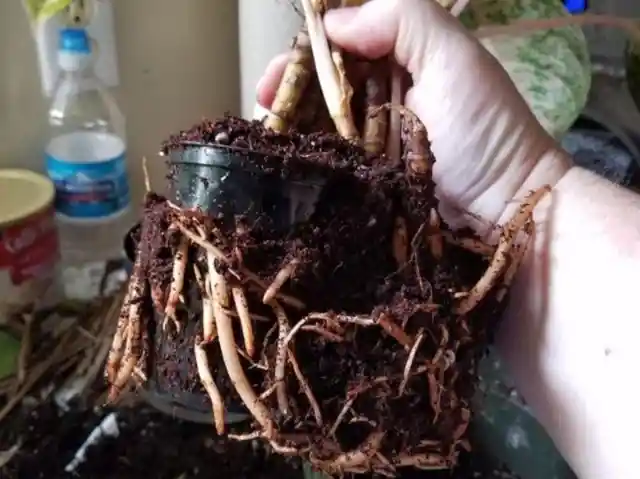
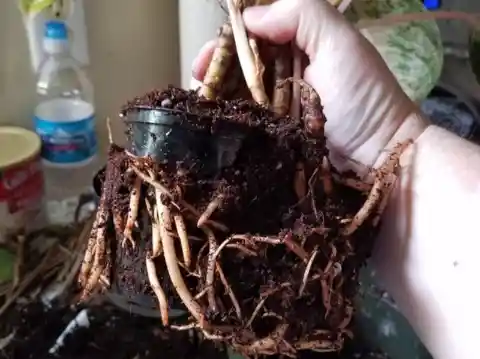
To prevent this from happening in your garden, you can select plastic pots that are comfortably larger than the pots each new plant comes in. Transfer the plants to their new pots and then plant them, pots and all, in your garden. This will give them access to all the nutrients of the soil while constricting the spread of their roots.
Scare Small Garden Pests Away with Forks
Placing a scarecrow in your garden usually isn't enough to scare away small pests. Thankfully, there's a powerful yet surprisingly simple fix for this gardening dilemma. You can frighten away bunnies, mice, squirrels, and more with plastic forks. As odd as this may sound, it’s a great way to protect the fruits of your labor.
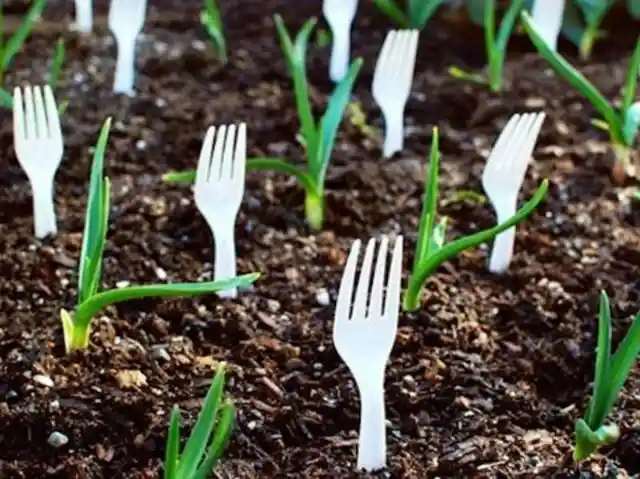
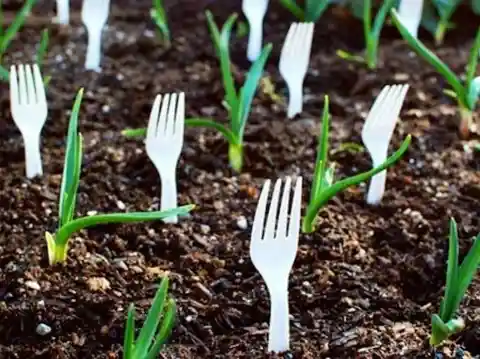
Place the forks with the pronged ends facing upward on the flower bed. Of course, you need to ensure that they won’t obstruct your work in the garden, but you also need to place enough to ensure all your plants are protected. This deterrent will deter garden pests, leaving your plants to thrive in harmony.
Cardboard Sheets to Zap Weeds
A garden free of weed takes a lot of hard work and patience, but did you know that you can take a shortcut with cardboard boxes? Believe it or not, it actually works! After setting up your garden's design, slice a crate or two open to make a few cardboard sheets.
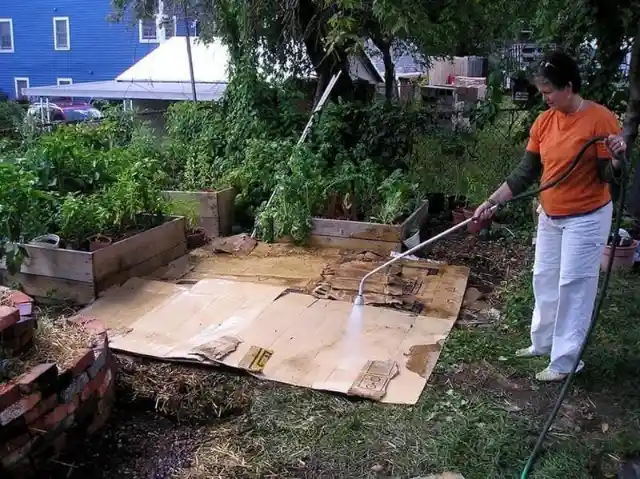
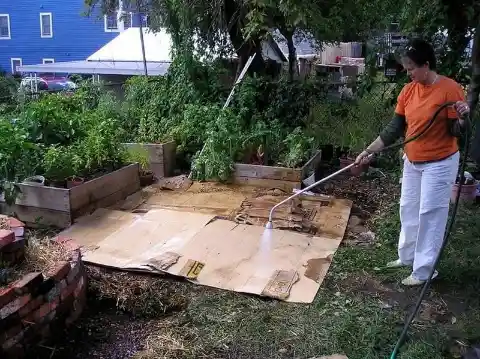
When you're ready, spread the sheets all through your garden and cover them with soil. The cardboard soaks up water, nourishing anything you plant above it. However, any weeds that may have roots in the soil beneath won’t be able to penetrate. Soon enough, you’ll have a weed-free garden.
Use Sponges To Zap Root Rot
As a beginner, you’ve probably experienced a couple of setbacks in making your ideal garden. One of the biggest reasons for potted plant death is improper watering. Funnily enough, this generally happens through overwatering rather than underwatering.
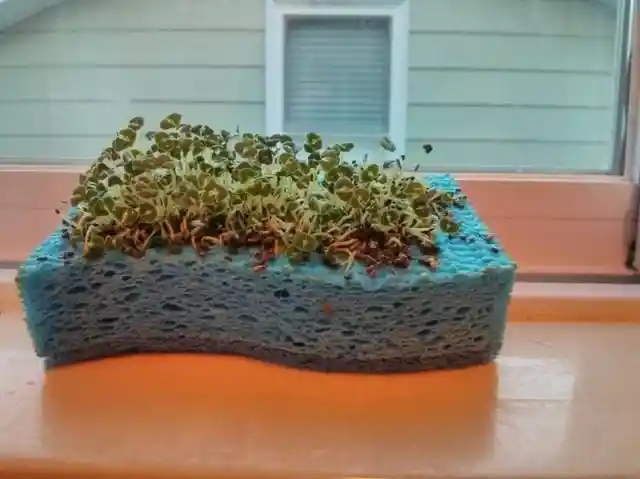
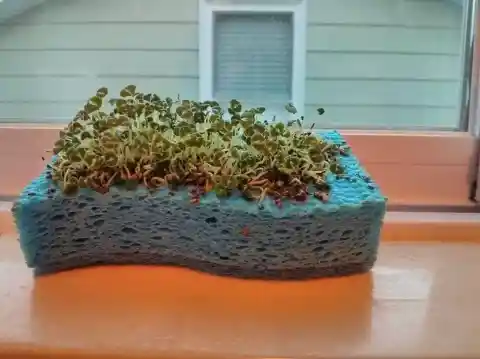
Now’s the time to put the watering can down. In its place, get a sponge and place it at the bottom of the pot before you add the plant. These items have the ability to satisfactorily soak up dampness which can save your plant from root rot and other problems.
Convert Kitchen Scraps into Garden Fertilizer
If you don't have a system for composting, that doesn't mean you can't utilize those kitchen scraps you would otherwise send to landfill. Save all your fruit and vegetable scraps and add them to your garden bed.
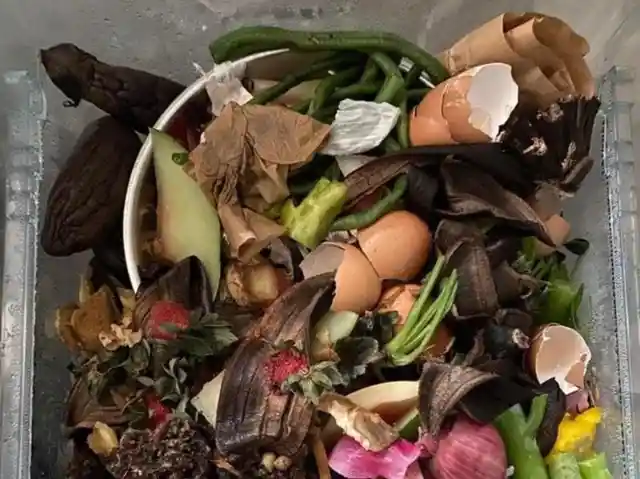
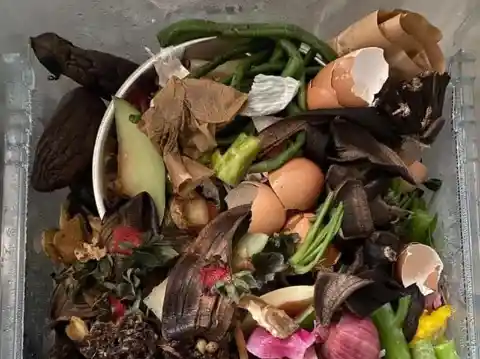
Here are some of the things you can save: bread, vegetable offcuts, citrus skins, potato peelings, banana peels, and even eggshells. Bury these scraps in your garden’s soil, and watch as your plants flourish.
Potatoes and Roses Are a Match Made in Heaven
For those who adore roses, your fantasy rose garden can become a reality, and it's not going to be difficult at all. You can make a rose garden wherever you wish with the help of an ordinary item found in many homes. Who would’ve thought that roses and potatoes were such a perfect match?
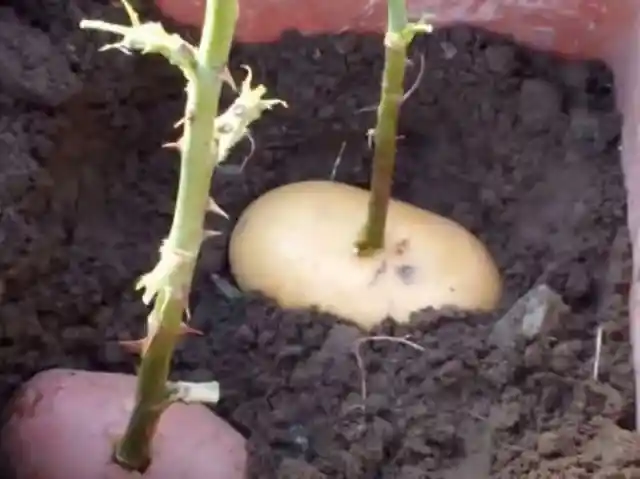
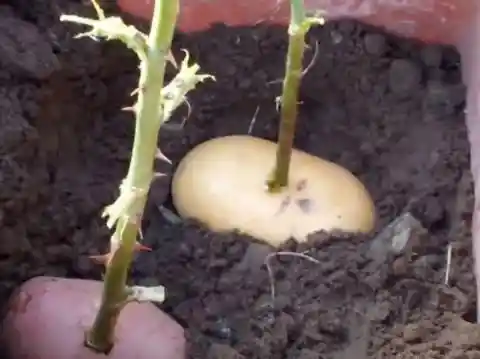
This hack is one of our all-time favorites. Some say it’s a myth, and it’s true that it doesn’t always work. However, it’s definitely possible and worth a try. First, drive a hole into the potato to accommodate the stem. Then, snip the stem of your rose at a 45-degree angle and dip the end in rooting hormone. Push the stem into the potato and plant it in your garden. The high water content of the potato creates the ideal environment for nourishing the cutting.
Use Toilet Paper Tubes for Seedlings
Here's a simple recycling trick that works in two ways – it shapes new plant life and helps save the planet. So, quit tossing those old toilet paper rolls and start using them in your garden. By stuffing them with soil, you can nurture new and delightful plant life in your backyard. Make space for the seeds by plunging your finger in the soil. Embed the seeds, and let them develop.
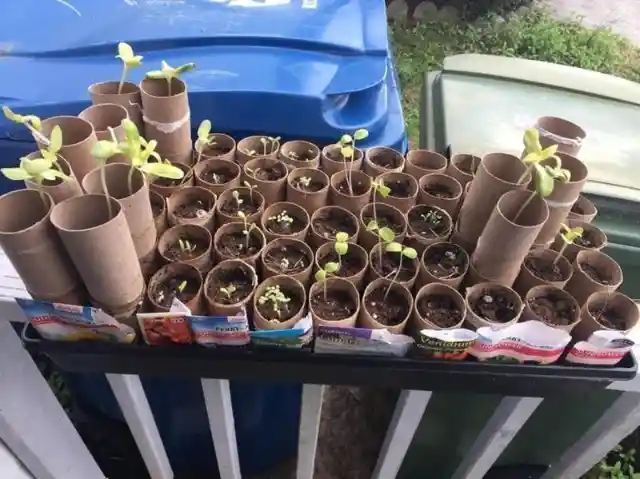
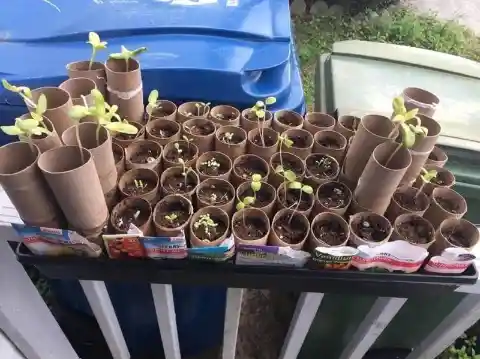
The second they sprout, find a spot for the cylinder in your garden. The cylinder will dissolve in tandem with the plant’s growth, meaning it won’t restrict it when it reaches a large and healthy size.
Plastic Containers Offer Excellent Growing Conditions
Aside from using plastic bottles to make a greenhouse, you can also utilize plastic in other ways in your garden. With the cover of a takeaway container, you can protect seedlings from pests while growing them in ideal conditions.
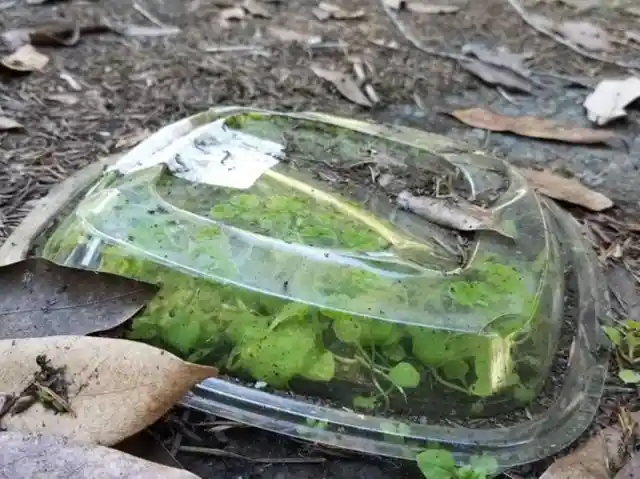
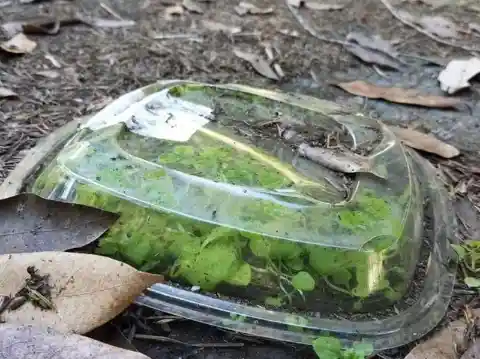
You can accomplish this by planting your seeds and then covering them with a clear takeaway lid and concealing the sides of it in some soil. By doing this, you make a pest hindrance and simultaneously permit the plants to flourish in a controlled and moist environment.
Natural Weed-Killer
Though store-bought weed killers kill weeds rapidly, sometimes they aren't as effective as you think they will be. Sometimes, the opposite is true and they go too far, killing your beloved plants along with the weeds. If you need a weed-killer that doesn't have brutal side effects, this hack is for you.
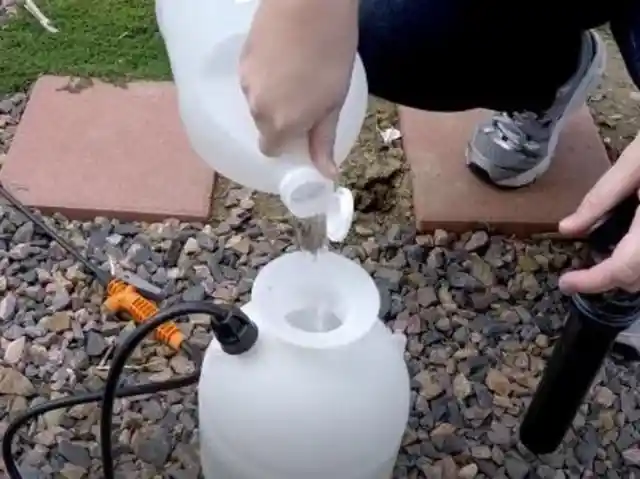
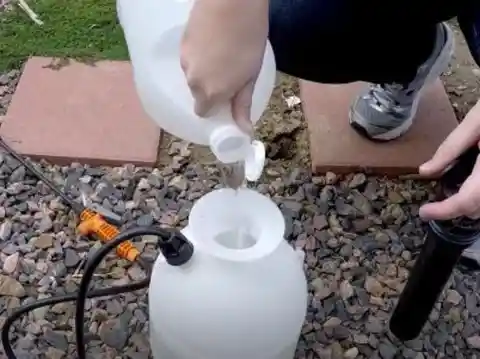
Just mix a bottle of white vinegar, one tablespoon of soap, and a cup of salt for an instant homemade weed killer. For excellent results, spray this mixture on a sunny afternoon.
Use Coffee Filters to Keep Your Soil in Place
Watering and caring for plants is a therapeutic activity. However, it can get messy. When moving potted plants around, it’s common for soil to drop out from the drainage holes. As annoying as this is, you can’t plug them up as these are essential for draining. So, what’s a gardener to do?
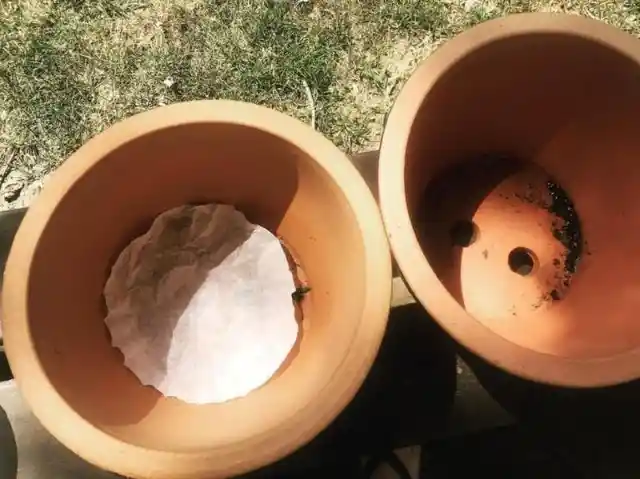
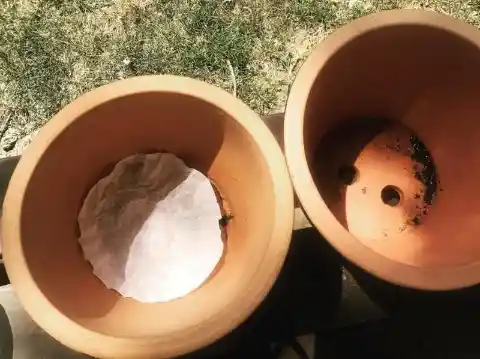
You can't plug the openings, but you can prevent soil from dropping out by placing coffee filters in the bottom of your pots. This trick permits the water to drain without the soil going with it.
Use the Nutrients in Weeds to Your Benefit
Having weeds in your garden is almost unavoidable, but for your plants to flourish, you need to eliminate them. This constant battle against persistent weeds can get burdensome. Thankfully, you can use them to your advantage.
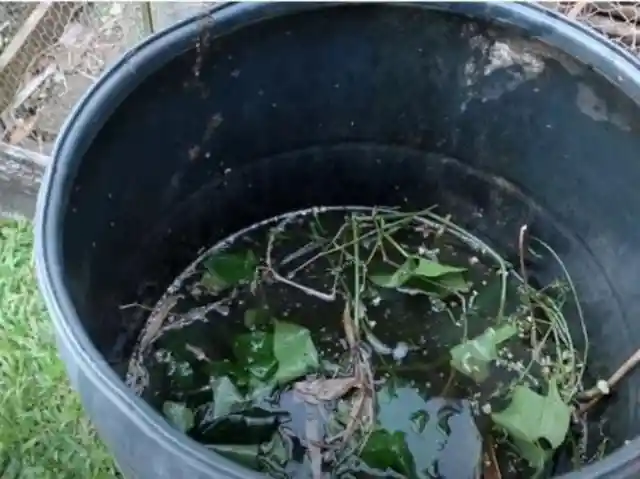
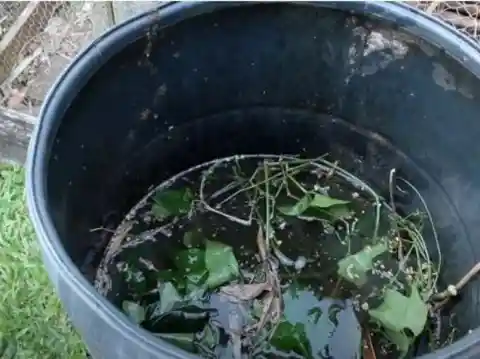
Here’s the trick: assemble the weeds in a pile and put everything in an enormous container. Then, cover them with water and hang tight for several hours. The water will draw out nutrients from the weeds which would otherwise be wasted. After letting it stew, eliminate the weeds and water the garden with the leftover liquid.
Use a Muffin Tin to Space Plants Evenly
Plants like their space and they need it if they are to develop. As such, it is of utmost importance to ensure there's adequate room when planting. Spacing assists the plant to grow nicely and it likewise makes your garden look satisfying to the eyes.
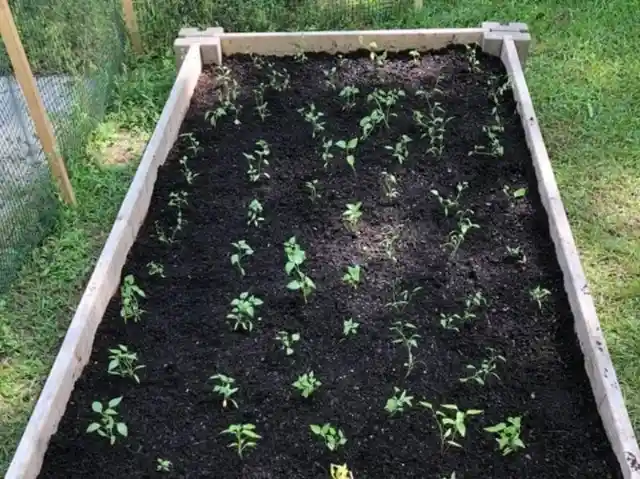
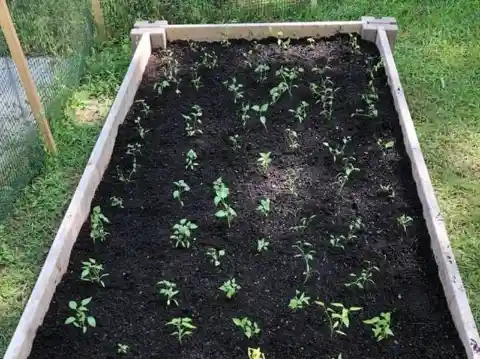
A ruler designed for plant spacing will cost you around $25, even if you purchase it online. If you’d rather save the cash, a muffin tin can get the job done. Press the muffin tin into the soil, leaving an imprint on the surface. Repeat this process to cover the entire space you wish to fill with plants. Then, place a seed in the focal point of each circle, and you'll have an impeccably spaced bed.
Use Plastic Bottles in Big Pots
Do you have an exceptionally large pot you want to utilize, but the plant has a small root system and you don’t want to squander so much soil? This hack is all you need. Get a collection of empty plastic jugs and stack them at the bottom of the pot. This will give you more control over how much soil you need to fill it.
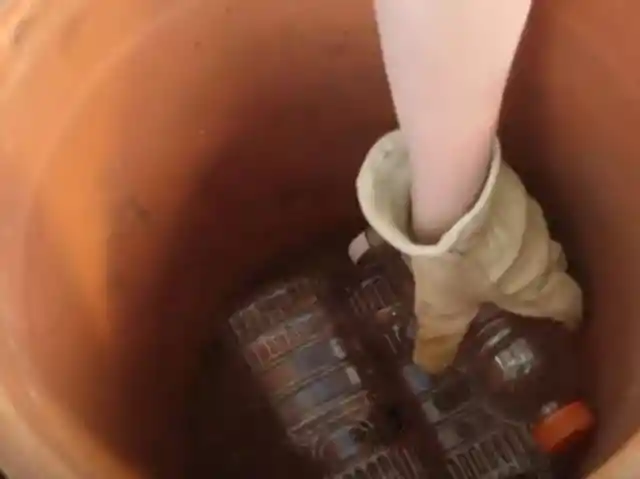
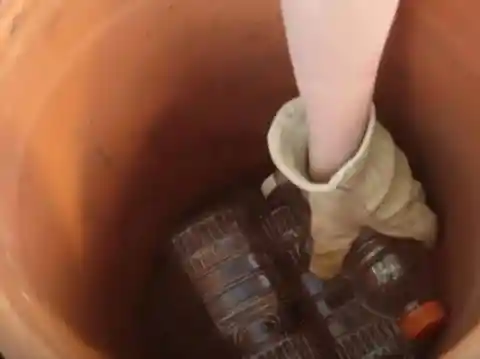
By doing this, you can save yourself a lot of money on soil while still ensuring your plant has everything it needs to thrive. Another significant benefit of this hack is the air pocket the bottles create at the bottom of the pot. This will help your plant, protecting it from things like root rot that could otherwise devastate it.
Aluminum Cans Are Great for Targeting Weeds
All gardeners dream of a way to spray weeds in a targeted way that ensures only the weed is hit. You can get pretty close to this ideal by recycling something you’re sure to already have in your home – an aluminum can.
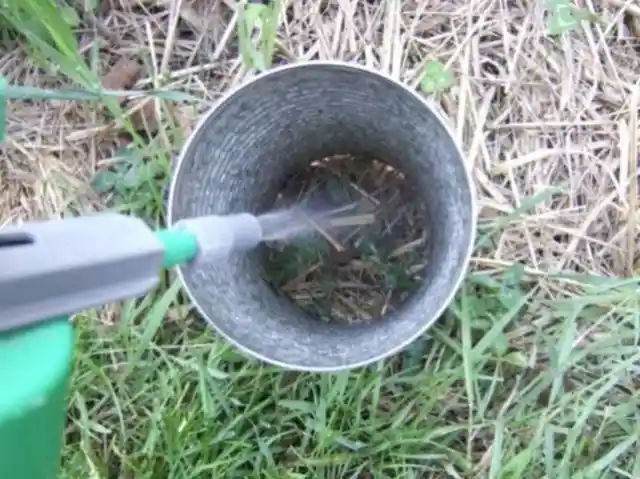
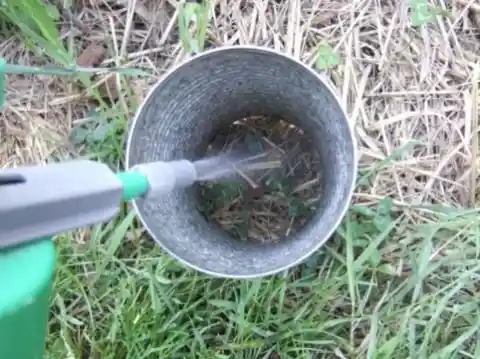
Remove the top and base of the can with a can opener. Place it over a weedy patch in your garden, and begin spraying the weed killer inside. This trick allows you to zero in on a specific spot, and you don't need to stress about killing any surrounding plants. It’ll also help you be more economical with the weed killer.
Create Your Own Insect Spray
There's nothing as devastating as putting all your love and care into cultivating a veggie garden, only to have your produce ruined by pests. You've toiled for so long, keeping an eye on your plants, and you can hardly wait for the harvest. Sadly, insects and pests always seem to strike just before the produce is ripe enough for you to harvest it. Thankfully, you can avoid this by creating a natural insect spray.
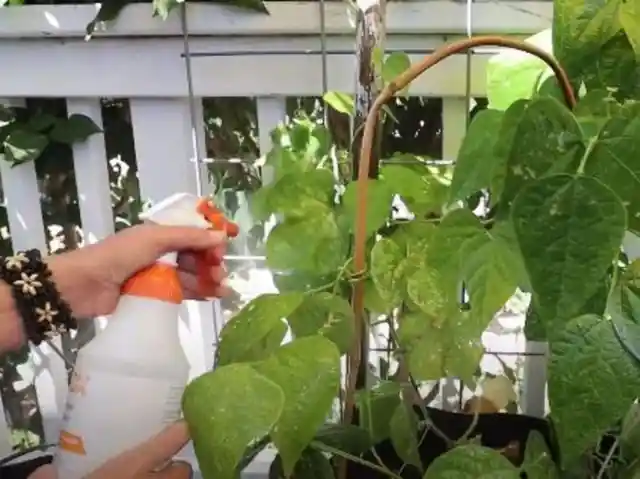
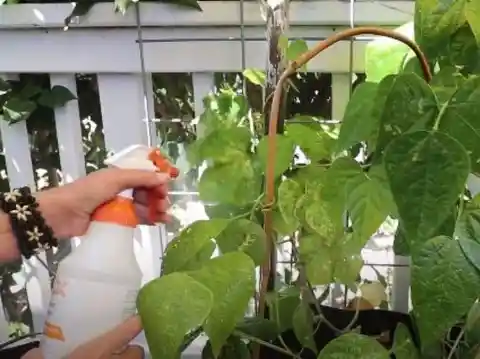
What you need is 1 garlic head, 1.5 cups of mint leaves, and 1 teaspoon of cayenne pepper. You can finish the blend with a dash of dishwashing liquid and six cups of clean water. Put everything into a food processor to mix, then pour it into a spray bottle.
Natural pest repellent with garlic and chili spray
Garlic and chili are both known for their strong odor and taste, which can help repel unwanted pests from your garden. Create a natural pest repellent by blending garlic cloves, chili peppers, and water, then straining the mixture. Put the liquid in a spray bottle and apply it to the affected plants, ensuring you cover both the top and bottom of the leaves.

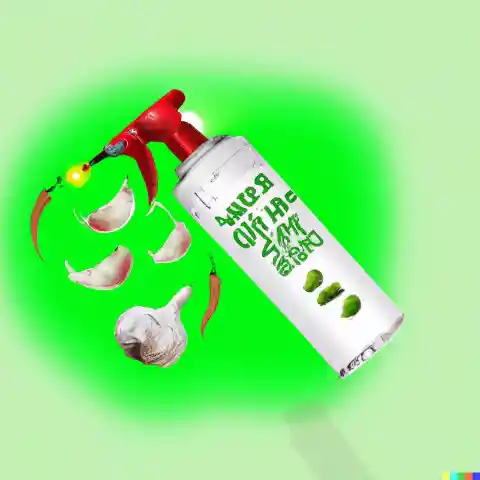
Using this homemade garlic and chili spray can not only save you money on store-bought pest repellents but also reduce the use of harmful chemicals in your garden. This environmentally-friendly solution keeps your garden safe for beneficial insects, like bees and ladybugs, while deterring harmful pests from damaging your plants.
Use aspirin for healthier plants
Moreover, the salicylic acid found in aspirin has been known to stimulate the production of beneficial enzymes and promote overall plant health. By incorporating this simple and cost-effective hack into your gardening routine, you can help your plants thrive with minimal effort and without resorting to harmful chemicals.Aspirin has long been known for its medical properties, but it can also be a powerful tool in your gardening arsenal. Dissolve a crushed aspirin tablet in water and use it to water your plants, or spray it directly onto the foliage. This can help boost the plant's natural defense system, making it more resistant to diseases and pests.
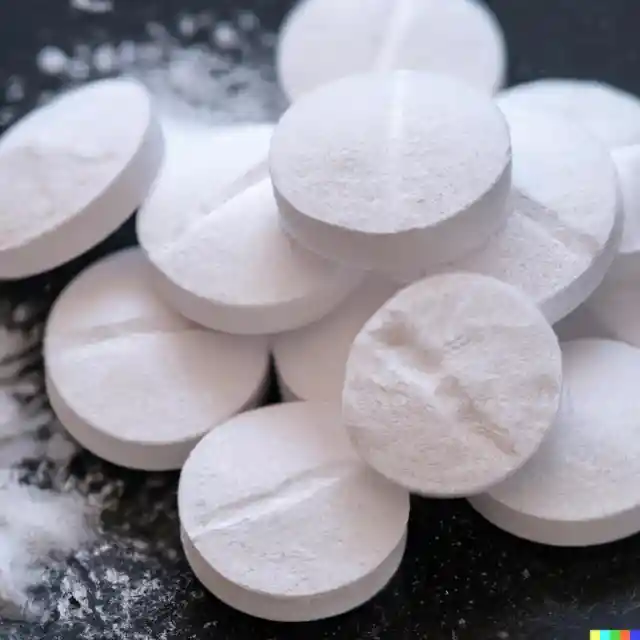
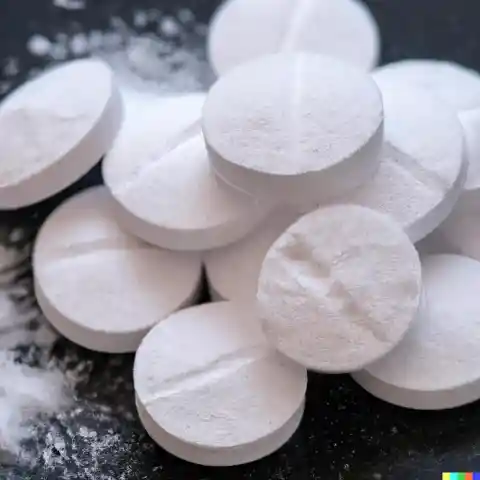
Moreover, the salicylic acid found in aspirin has been known to stimulate the production of beneficial enzymes and promote overall plant health. By incorporating this simple and cost-effective hack into your gardening routine, you can help your plants thrive with minimal effort and without resorting to harmful chemicals.
Use cinnamon to prevent fungal growth
Cinnamon is not only a delicious spice but also a natural fungicide. Sprinkle cinnamon on the soil around your plants to help prevent fungal growth and protect your garden from diseases like damping-off, which can affect seedlings and cause them to rot.
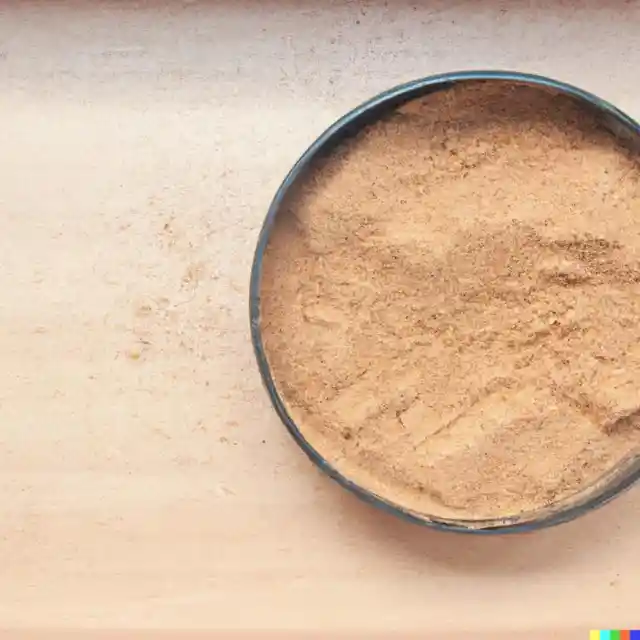
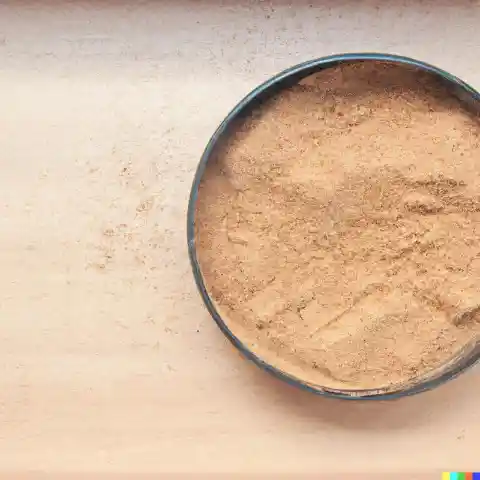
In addition, cinnamon can be used to heal wounds on plants by applying it directly to the damaged area. This can help speed up the healing process and prevent the spread of infection. With its natural antifungal properties, cinnamon is an affordable and environmentally-friendly option to keep your garden healthy and vibrant.
Eggshell seedling pots
Instead of discarding eggshells, repurpose them as seedling pots. When cracking open eggs, try to remove only the top third of the shell, leaving the majority of the shell intact. Rinse out the shells and poke a small hole in the bottom for drainage. Fill the shells with potting soil and plant your seeds.
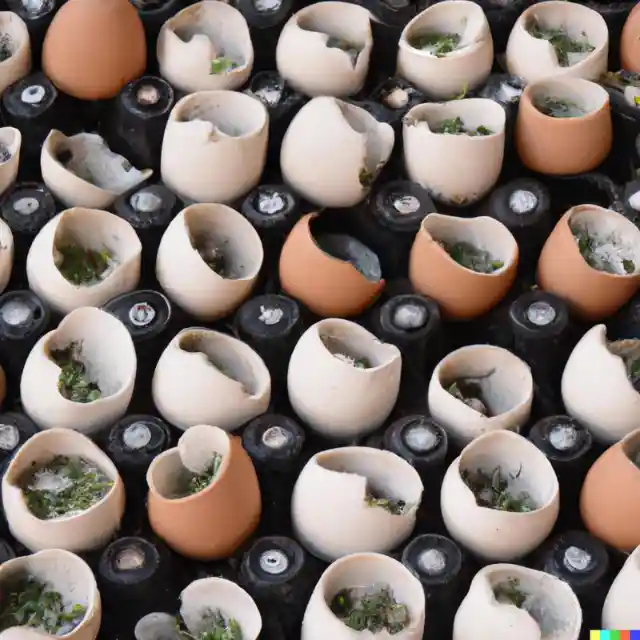
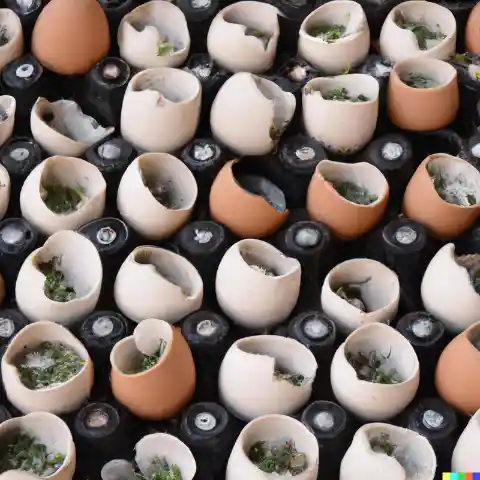
Eggshell seedling pots are an eco-friendly alternative to plastic seed trays, and they offer a natural source of calcium for your plants as they grow. When it's time to transplant your seedlings, simply crush the eggshell gently, and plant the entire thing in the ground. The shell will decompose, providing additional nutrients to the soil.
Use a rain barrel to collect water
Installing a rain barrel is an excellent way to conserve water and reduce your reliance on tap water for your garden. By collecting rainwater, you can provide your plants with a more natural and chemical-free source of hydration, which is especially beneficial for sensitive plants.
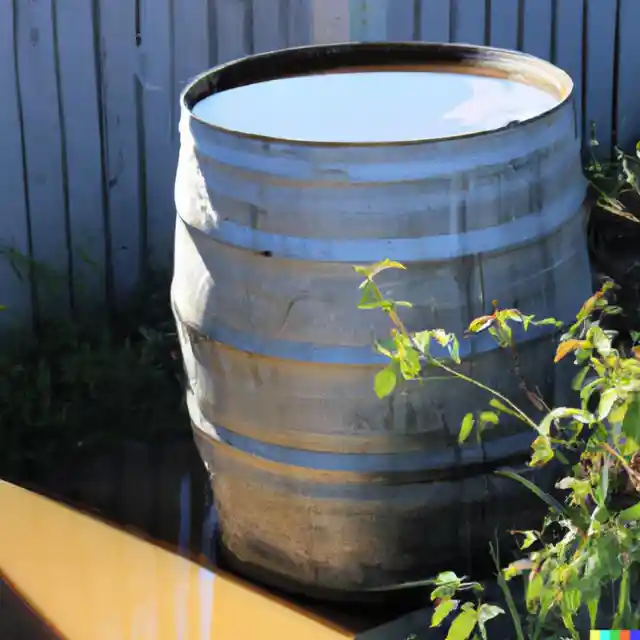
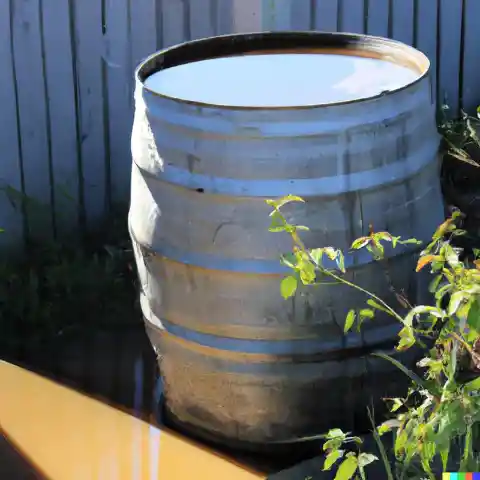
Rain barrels are easy to install and maintain. Simply connect a downspout to the barrel and place it on a stable surface near your garden. You can then use a watering can or hose to distribute the collected rainwater to your plants. In addition to being environmentally friendly, this hack can also help you save money on your water bills.
Use Reflective Mulch
Reflective mulches are a fantastic way to deter pests and boost plant growth at the same time. By using materials like aluminum foil or reflective plastic, you can create a barrier that bounces sunlight back onto your plants, increasing the amount of light they receive. This can help promote growth and improve overall plant health.
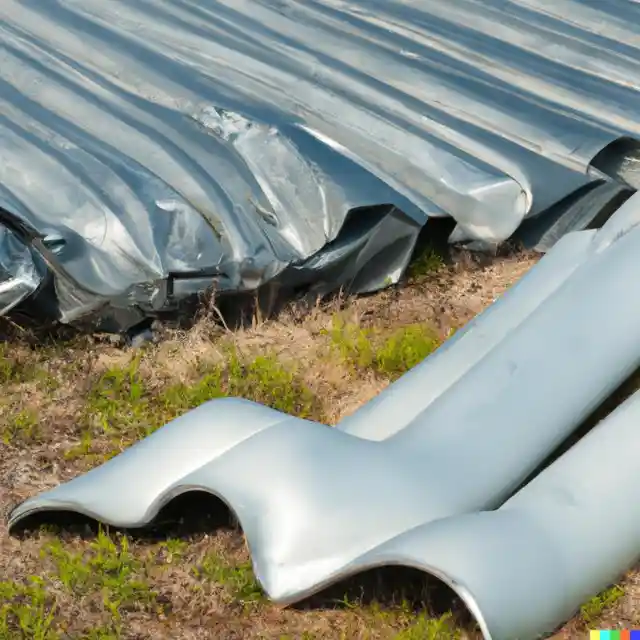
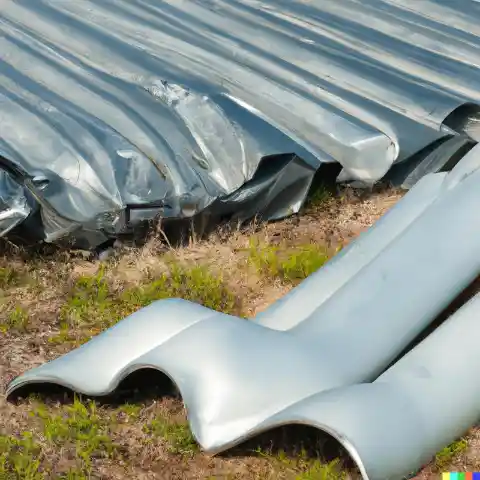
Not only does reflective mulch increase light exposure, but it can also deter pests like aphids and whiteflies. The bright reflection confuses and disorients them, making it difficult for them to find their target plants. As a result, your garden remains pest-free, allowing your plants to thrive without the need for chemical treatments.
Plant a Trap Crop
Trap cropping is a method of using certain plants to attract pests away from your main crops. By planting a trap crop nearby, you can protect your more valuable plants from damage caused by insects or other pests. This is a natural and effective way to manage garden pests without resorting to harmful chemicals.
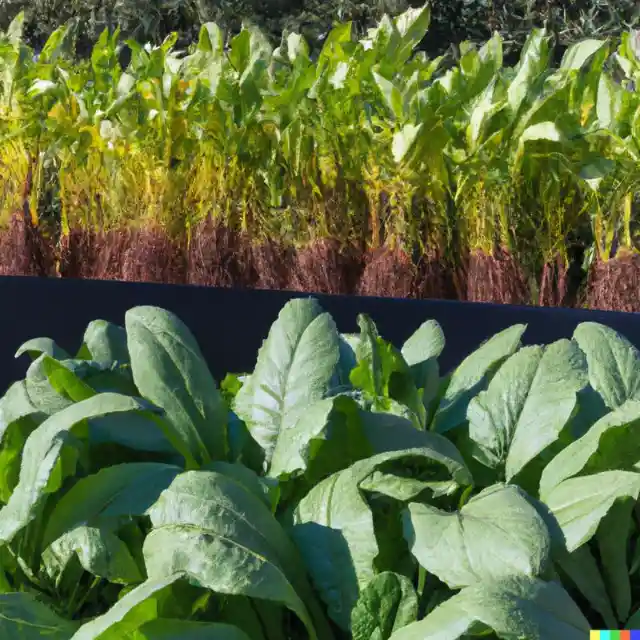
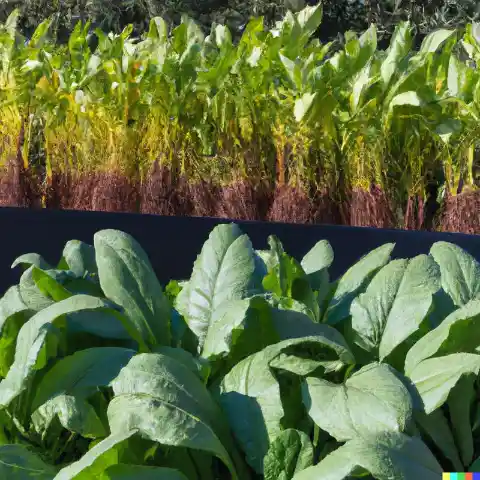
Choose a trap crop that is more appealing to pests than your primary plants. For example, if you're growing tomatoes, plant some nasturtiums nearby to attract aphids away from your tomatoes. This will help keep your tomato plants healthy, while the nasturtiums act as a sacrificial crop to protect the rest of your garden.
Use Diatomaceous Earth
Diatomaceous earth is a natural substance made from the fossilized remains of tiny aquatic organisms called diatoms. It's a powdery substance that can be used as a natural pesticide in your garden. It works by damaging the exoskeletons of insects, causing them to dehydrate and die.
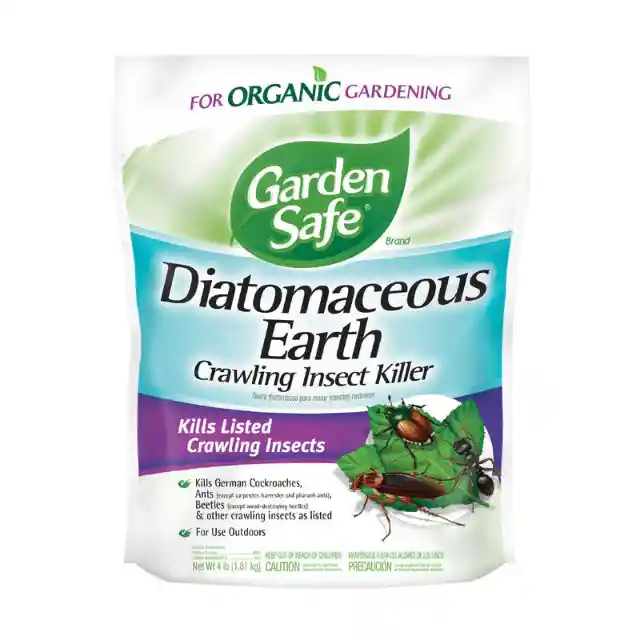
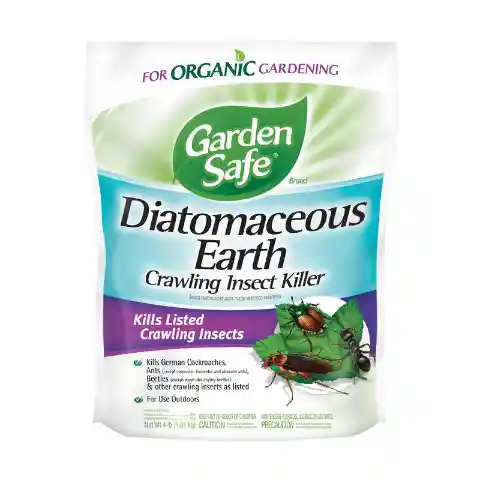
Sprinkle diatomaceous earth around your garden, focusing on areas where you've noticed pests or their damage. Be sure to use food-grade diatomaceous earth, which is safe for humans and pets. Keep in mind that it may need to be reapplied after rain, as it can lose its effectiveness when wet.
Utilize a Rain Gauge
Monitoring rainfall can help you better understand your garden's watering needs. By using a rain gauge, you can measure the amount of precipitation your garden receives and adjust your watering schedule accordingly. This can help you conserve water and ensure your plants receive the optimal amount of moisture.
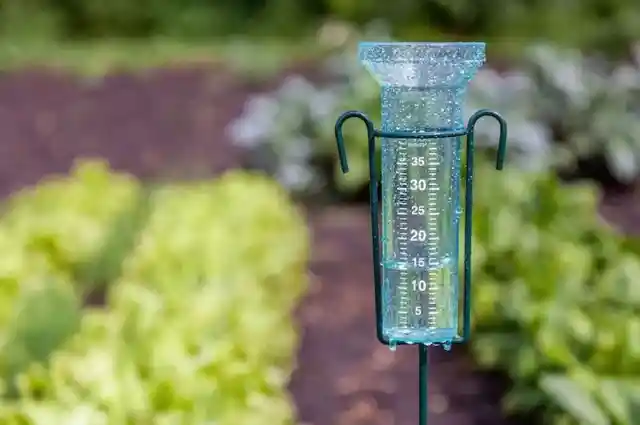
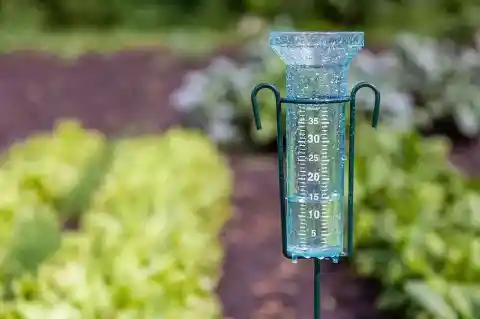
Place the rain gauge in an open area of your garden, away from trees or other structures that may interfere with accurate rainfall measurements. Check the gauge regularly and record the amount of rainfall your garden receives. Use this information to inform your watering schedule and keep your plants happy and healthy.
Implement Succession Planting
Succession planting is a method of staggering plantings of the same crop over a period of time. This technique allows you to have a continuous harvest throughout the growing season, instead of a single large harvest. It's an excellent way to maximize the productivity of your garden and ensure a consistent supply of fresh produce.
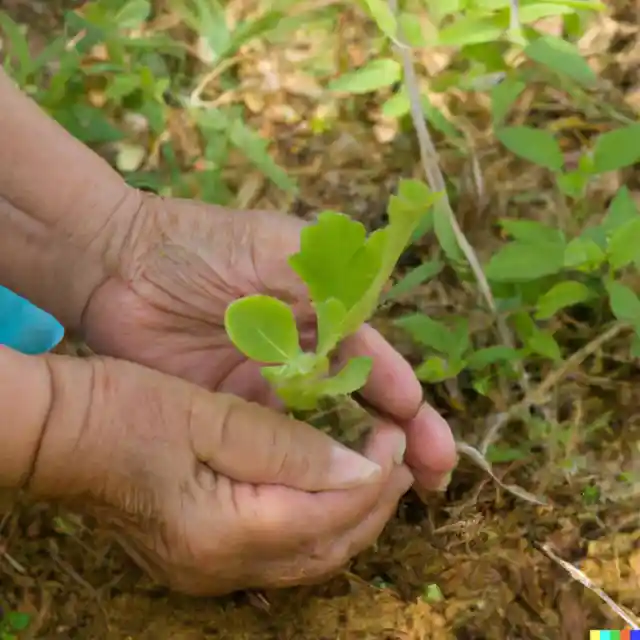
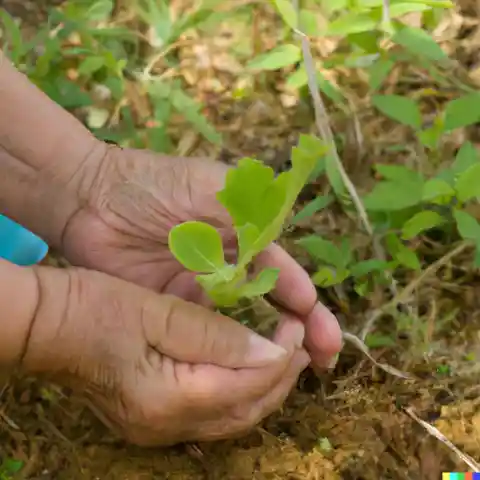
To implement succession planting, simply stagger the planting times of your chosen crop by two to three weeks. This will ensure that as one group of plants is finishing its harvest, another group is just beginning to produce. Experiment with different intervals and plant varieties to find the perfect succession planting schedule for your garden.
Create a Compost Tea
Compost tea is a nutrient-rich liquid made by steeping compost in water. It's an excellent way to provide your plants with a quick dose of nutrients and can help improve overall plant health. Compost tea can be applied as a foliar spray or used to water your plants directly.
To make compost tea, simply fill a large bucket or container with water and add a few handfuls of finished compost. Allow the mixture to steep for 24-48 hours, stirring occasionally. Strain the liquid into a separate container, using a fine mesh strainer or cheesecloth to remove any solid particles. Your compost tea is now ready to use.
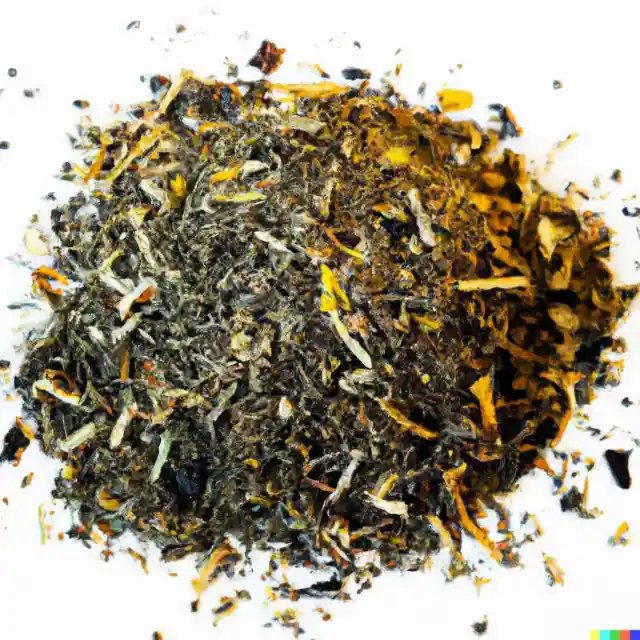
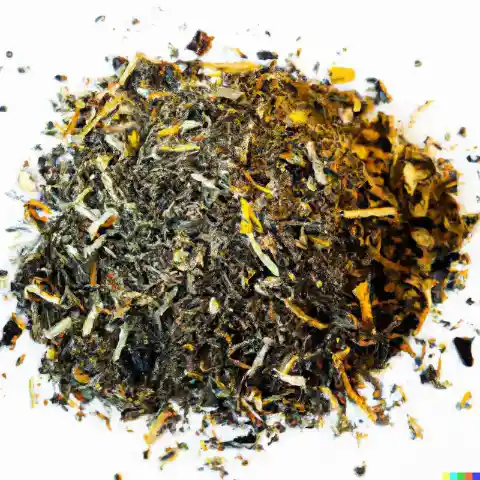
Before using compost tea, dilute it with water in a ratio of 1:10 (one part compost tea to ten parts water). This will ensure that the nutrients are not too concentrated, which could potentially harm your plants. Apply the diluted compost tea to your garden as a foliar spray, making sure to cover both the tops and undersides of the leaves, or use it to water your plants at the root zone. Repeat this process every 2-4 weeks throughout the growing season to give your plants an extra boost of nutrients, promoting healthy growth and increased resistance to pests and diseases.
Vertical Gardening
Vertical gardening is an excellent solution for gardeners with limited space or those who want to make the most of their available area. By growing plants vertically, you can maximize your garden's productivity and create a visually appealing display. This technique is especially useful for growing vining plants like cucumbers, pole beans, and peas.
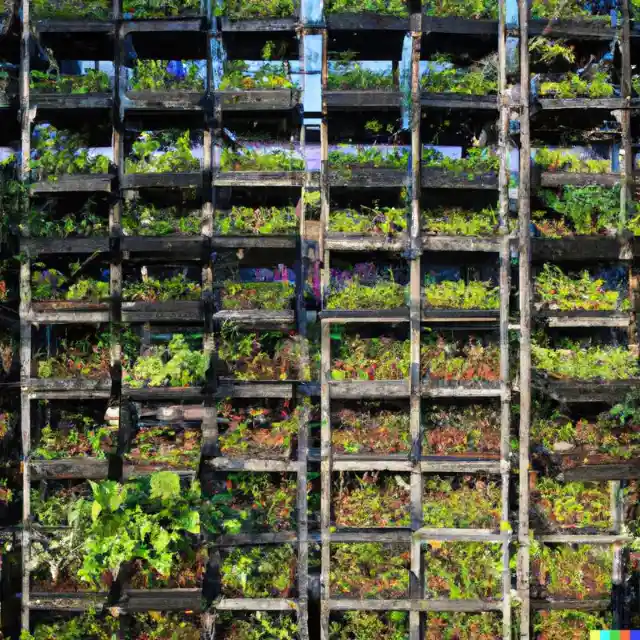
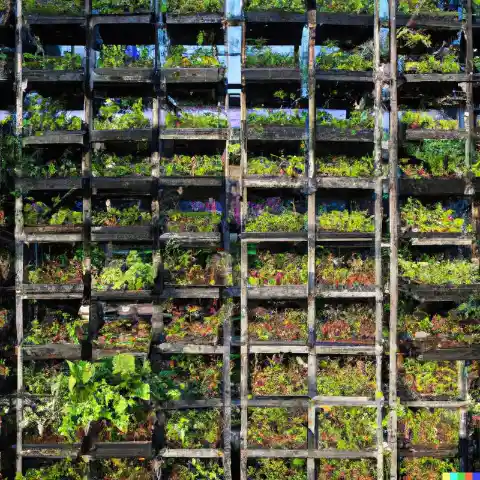
To start vertical gardening, choose a sturdy support structure such as a trellis, fence, or even a repurposed ladder. Ensure that it is strong enough to support the weight of your plants and that it receives adequate sunlight. Plant your chosen crops at the base of the structure and train the vines to grow upwards as they mature. This not only saves space but also improves air circulation, reducing the risk of disease.
Use Chamomile Tea to Prevent Damping-Off
Chamomile tea is a natural and effective way to prevent damping-off, a fungal disease that affects young seedlings. The tea contains antifungal compounds that can help protect your plants from pathogens in the soil. It's an easy and cost-effective way to give your seedlings a healthy start.
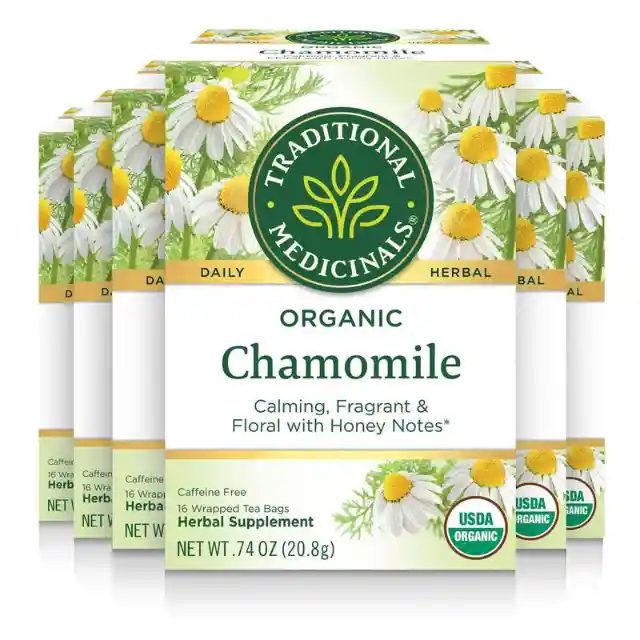
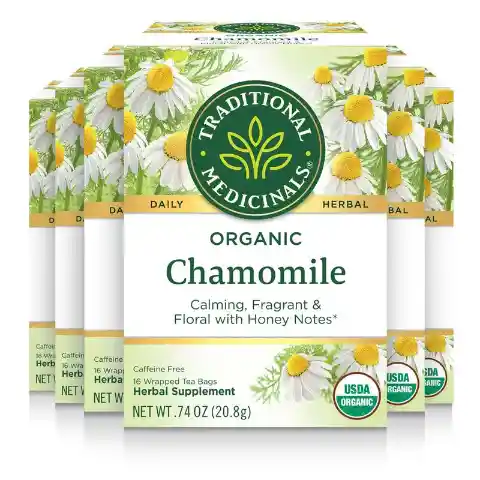
To use chamomile tea as a preventative measure, steep a few chamomile tea bags in a gallon of water and allow it to cool. Use the cooled tea to water your seedlings, making sure to keep the soil evenly moist but not waterlogged. This will create an environment that discourages the growth of harmful fungi and promotes strong, healthy seedlings.
Grow a Wildlife-Friendly Garden
Encouraging wildlife to visit your garden can be both beneficial and enjoyable. Many creatures, such as birds, bees, and butterflies, play an essential role in pollination and pest control. By creating a welcoming environment for these creatures, you can support a healthy ecosystem and enjoy the beauty they bring to your garden.
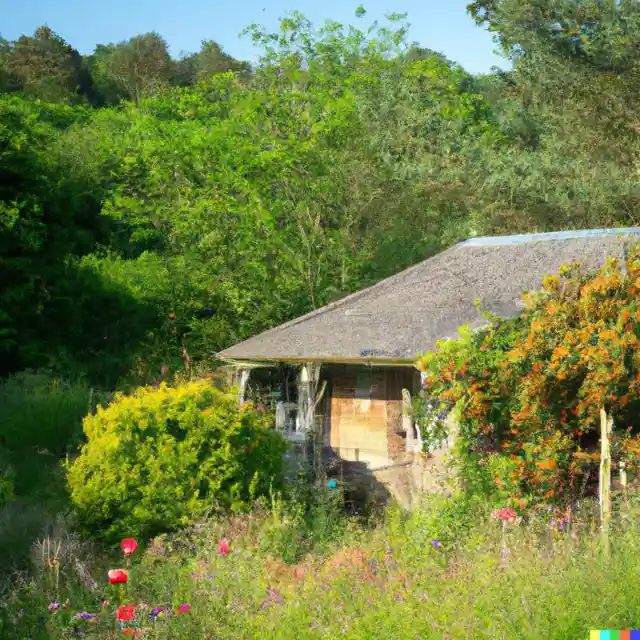
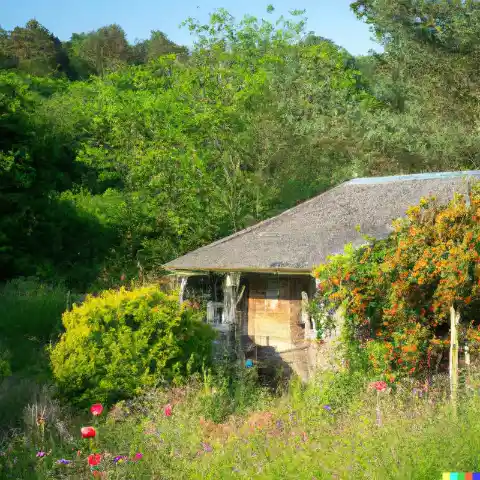
To attract wildlife, plant a variety of flowering plants that provide nectar and pollen for pollinators. Additionally, consider adding a birdbath or small pond to provide a water source for birds and other animals. Incorporate nesting boxes, birdhouses, or insect hotels to provide shelter and nesting sites for your garden's beneficial inhabitants.
Use a Soaker Hose for Efficient Watering
A soaker hose is a porous, flexible hose that can be snaked through your garden beds to provide slow, consistent watering directly to your plants' roots. This method of watering is more efficient than traditional sprinklers, as it minimizes water loss due to evaporation and runoff. It also helps prevent the spread of diseases by keeping the foliage dry.
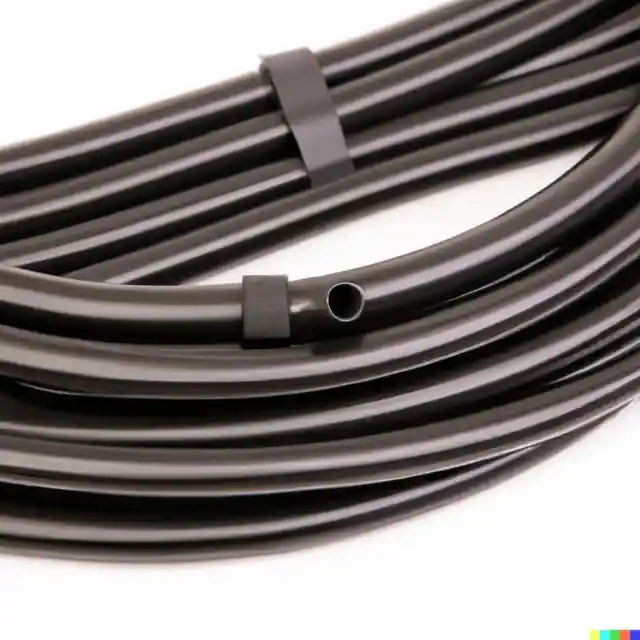
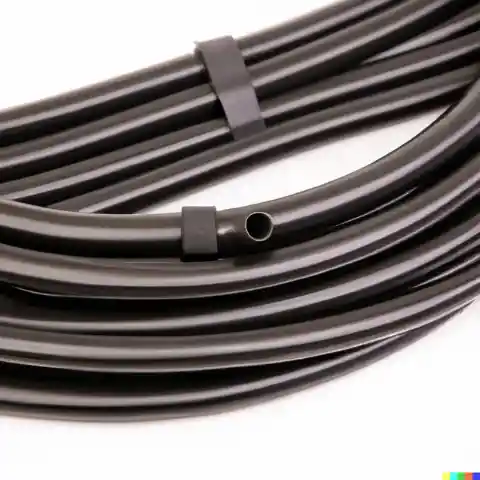
To use a soaker hose, simply lay it out in your garden beds, positioning it close to the base of your plants. Connect it to your main water source and turn on the water at a low pressure. The water will slowly seep out of the hose, providing a steady supply of moisture to your plants' root systems, which promotes healthy growth.